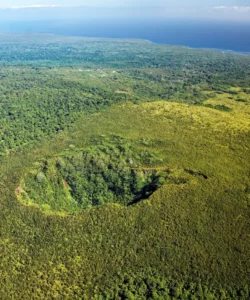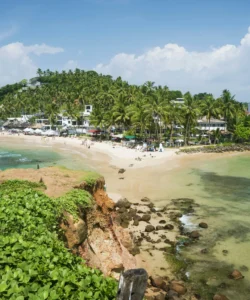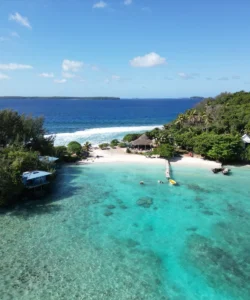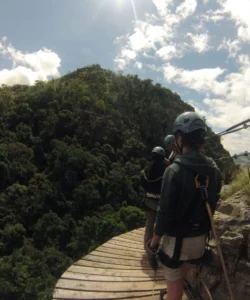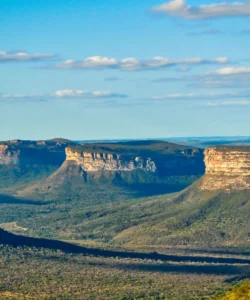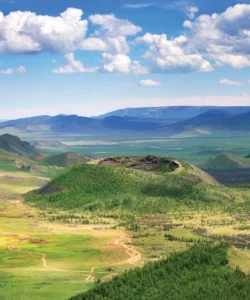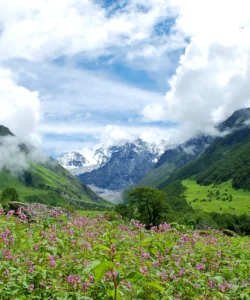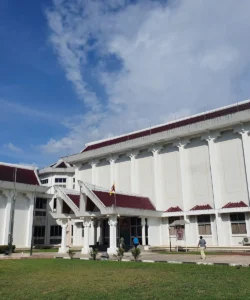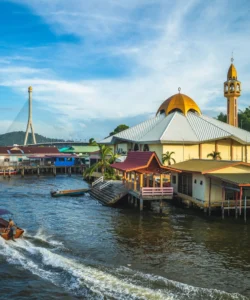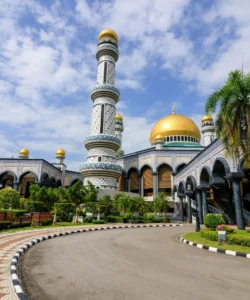The Borra Caves (also known as Borra Guhalu in Telugu) are a fascinating natural wonder located in the state of Andhra Pradesh, India. These ancient limestone caves are renowned for their intricate and often massive speleothems (stalactites and stalagmites), unique geological formations, and their deep connection to local folklore and prehistoric human habitation.
Name: Borra Caves (Telugu: బొర్రా గుహలు, Borrā Guhalu, where “Borra” means hollow and “Guhalu” means caves)
Address: The caves are situated in the Ananthagiri Hills of the Araku Valley, in the Alluri Sitharama Raju district of Andhra Pradesh, India. They are approximately 90-92 kilometers (56-57 miles) northwest of Visakhapatnam (Vizag) city.
How to Get There:
Visakhapatnam is the primary gateway city for visiting Borra Caves and the Araku Valley.
- By Air: The nearest airport is Visakhapatnam International Airport (VTZ), located about 78-94 km from Borra Caves. From the airport, you can hire a taxi or pre-arranged transfer.
- By Train: The most scenic and recommended way to reach the caves is by train. The Visakhapatnam-Araku passenger train offers a picturesque journey through tunnels and over bridges in the Eastern Ghats. This train specifically stops at Borra Guhalu Railway Station, which is just 1 km from the cave entrance. It’s often advised to take this train from Visakhapatnam in the morning (around 6:50 AM) to reach the caves by 9:45 AM.
- By Road: Borra Caves are well-connected by road from Visakhapatnam (approx. 2.5-3 hours drive) and other parts of Andhra Pradesh. You can hire a private car/taxi or take a bus. Many tourists combine a visit to Borra Caves with Araku Valley as a day trip.
- Exploring the Caves: The caves have well-lit pathways and stairs to facilitate exploration. Local guides are often available to explain the formations and folklore.
- Entrance Fee: There is a nominal entrance fee to enter Borra Caves.
Landscape and Architecture:
The “architecture” of Borra Caves is entirely natural, sculpted over millions of years by the relentless action of water on limestone.
- Karstic Limestone Formations: The caves are primarily karstic limestone structures, formed by the perennial flow of the Gosthani River. Water percolating from the roof of the caves dissolves limestone, dripping down to create a spectacular array of stalactites (hanging from the ceiling) and stalagmites (rising from the floor). Many of these formations have merged to form massive columns.
- Depth and Size: The caves are considered one of the largest in India, extending to a depth of 80 meters (260 feet) and covering an area of about 2 square kilometers (0.8 sq mi). The entrance itself is quite large, measuring up to 100 meters horizontally and 75 meters vertically.
- Natural Illumination and Artificial Lighting: A large opening in the roof allows some natural light to penetrate, especially in the central chamber, creating a mystical ambiance. However, the interiors are extensively illuminated with multi-colored mercury, sodium vapor, and halogen lamps installed by the Andhra Pradesh Tourism Development Corporation, highlighting the various formations and adding a vibrant, almost surreal, glow to the cave’s natural features.
- “Sculpted” Forms: Over millennia, the dripping mineralized water has sculpted the limestone into a myriad of intriguing and often bizarre shapes. Locals and visitors have given imaginative names to these formations, such as:
- Shiva-Parvati: Resembling the Hindu deities.
- Mother-Child: A formation evoking a maternal embrace.
- Rishi’s Beard: Long, flowing stalactites.
- Human Brain, Crocodile, Tiger, Cow’s Udder: Formations resembling these objects or animals.
- Naturally formed Shivalingam: A revered stone formation inside the cave believed to resemble a Shiva Lingam, which is worshipped by local tribes.
- Underground River: The Gosthani River, which originated from these caves, flows between the solidified stalactites and stalagmites, highlighting its role in the cave’s formation.
- Surrounding Hills: The caves are situated in the Ananthagiri Hills of the Eastern Ghats, a region characterized by beautiful valleys, waterfalls (like Katiki Waterfalls), and coffee plantations, offering a scenic backdrop.
What Makes It Famous:
- Largest and Deepest Limestone Caves in India: Borra Caves are widely recognized as one of India’s largest and deepest limestone caves, a testament to millions of years of geological processes.
- Stunning Speleothems: The sheer volume and variety of irregularly shaped stalactites, stalagmites, and columns are a major draw, captivating visitors with their natural artistry.
- Mystical Shiva Lingam and Local Folklore: A naturally formed Shiva Lingam deep inside the caves is highly revered by local tribal communities, who have built a small temple outside. The caves are steeped in local legends, most famously the tale of a cowherd discovering the caves after his cow fell through a hole in the roof, leading to the discovery of the Shiva Lingam. This blend of natural wonder and deep-rooted spiritual belief is a key part of its fame.
- Prehistoric Human Habitation: Archaeological excavations within the caves have uncovered stone tools dating back 30,000 to 50,000 years (Middle Paleolithic Age), indicating that the caves were once inhabited by early humans, adding significant historical and anthropological importance.
- Vibrant Interior Lighting: The strategically installed multi-colored artificial lighting enhances the visual appeal of the formations, transforming the cave’s interior into a spectacular and almost surreal experience for visitors.
- Picturesque Location in Araku Valley: The caves’ setting in the scenic Araku Valley, surrounded by hills and lush vegetation, complements the subterranean beauty with appealing natural landscapes above ground.
Differences from Some Other Wonders:
- Karstic Limestone Formation: While other caves like Batu Caves are also limestone, Borra Caves are primarily famous for their karstic formations of stalactites, stalagmites, and columns, actively shaped by water dissolution over millions of years. This focus on intricate speleothems is a defining characteristic.
- Deepest Caves in India: Borra Caves are considered the deepest natural caves in India, extending to a significant depth, which is a key physical distinction.
- Blend of Natural Beauty and Indigenous Folklore: While many natural wonders have local legends, Borra Caves’ fame is particularly intertwined with the specific tribal legends of its discovery and the reverence for the natural Shiva Lingam, making the cultural connection very direct and prominent.
- Archaeological Evidence of Prehistoric Human Life: The confirmed discovery of Middle Paleolithic stone tools indicating early human habitation within the caves is a significant archaeological feature not necessarily present or emphasized in all other cave systems.
- Artificial Colored Lighting: While some caves use lighting, the extensive and multi-colored artificial illumination in Borra Caves is a deliberate design choice that enhances the visual spectacle, contrasting with more naturally lit or minimally lit cave systems.
- No Religious Structures Carved Out of Rock: Unlike Ellora Caves or Ajanta Caves, which are monumental rock-cut temples and monasteries carved out of the rock by human hands, Borra Caves are natural geological formations with a small, naturally formed shrine (the Shiva Lingam) and a temple built outside the cave. The “architecture” is geological, not human-sculpted religious structures.
- Train Access Directly to Site: The unique ability to access the caves via a scenic train journey directly to the “Borra Guhalu” station which is just 1 km from the entrance, adds a distinctive travel experience.
Borra Caves Photos:


























